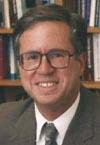IntroductionTheology and Science: Current Issues and Future Directions(C) 2000 Robert J. Russell In her 1996 Presidential Address to the Catholic Theological
Society of America, Elizabeth A. Johnson called for a re-engagement with the
sciences which will shift the axis of all theological questions, setting an
agenda for years to come. According to Johnson, What is needed now, I am
convinced, is a return to cosmology, in order to restore fullness of
vision and get theology back on the track from which it fell off a few hundred
years ago. This essay seeks to provide a short survey of the rapidly
growing and truly interdisciplinary field The essay is structured in layers, which represent both historical and conceptual developments, overlays, and interactions. Part I) presents an overview of methodology: how are we to relate theology and science? This includes Sections on A), typologies (ways of relating science and religion); B) critical realism (the original bridge between science and religion); C) further developments in methodology; D) arguments against reductionism; E) ontological implications; F) metaphysical options system vs. specific philosophical issues; and G) summary. Part 2) is an overview of developments and current issues in Christian theology and natural science. This includes Sections on A) God and nature, focusing on time and eternity and divine action; B) creation and cosmology; C) creation and evolution; D) theological anthropology and evolution; and E) redemption and eschatology in relation to evolution and cosmology, including christology, theodicy and eschatology. This material takes us up to the present and points towards future horizons of research within these areas per se. Part 3) introduces new voices into the field which challenge and critique many of the underlying assumptions and perspectives of the preceding material. Though roots of these challenges and critiques can be found in earlier work, these voices bring also introduce a striking departure from them. Part 3) includes A), feminist critiques of science and of theology and science; B) post-modern challenges to science and to theology and science; C ) inter-religious dialogue, world spiritualities, and science; D) history of science and religion and E) theological and philosophical implications for science. Wherever appropriate, each Section includes a science minisummary that highlights key concepts in the relevant scientific topics and provides references to further reading in the Endnotes. I also include an Appendix on teaching resources and programs in science and religion. As will all writings, I bring the perspectives, limitations
and distortions of my own experience and history. It is fitting to commence this essay with these words from John Paul II: The church and the scientific community will inevitably
interact; their options do not include isolation...Science can purify religion
from error and superstition; religion can purify science from idolatry and
false absolutes. Each can draw the other into a wider world, a world in which
both can flourish...We need each other to be what we must be, what we are
called to be. Contributed by: Dr. Robert Russell |

